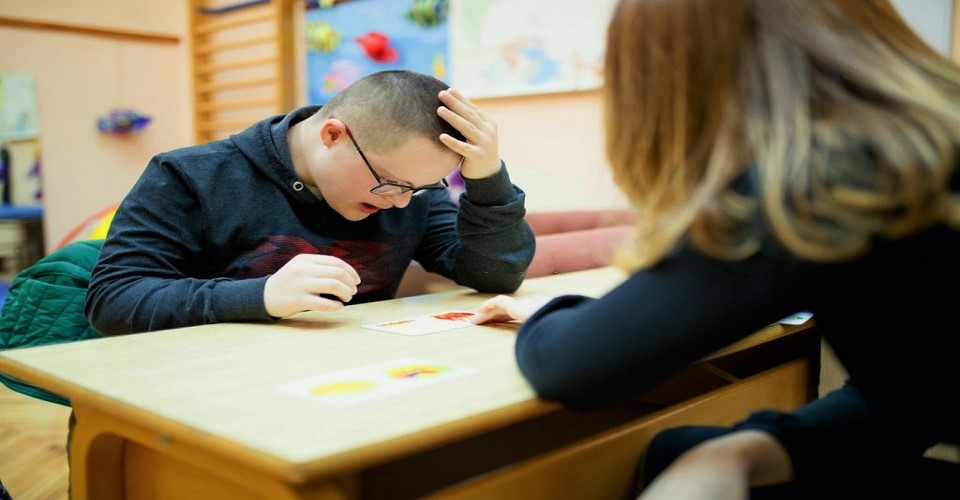The Emotional and Behavioral Disorders in Special Education
27th November 2020

As teachers and parents, the mental health of our children is a natural and crucial concern for us all. The reason behind this is numerous mental conditions which start in childhood or sometimes adolescence and most of the time these go undiagnosed for years. When it comes to the mental health of special needs children, the concern becomes more deep and intense. These mental conditions affect special needs children in an immense way and eventually prevent them in succeeding academically and socially.
According to the Individuals with Disabilities Education Act (IDEA), “Behavioral and emotional disorders fall under the rubric of Emotional Disturbance. Emotional Disturbance is the descriptive designation for behavioral and emotional disorders in the Federal Law.”
So what are Emotional and Behavioral Disorders (EBD)?
Emotional and behavioral disorders (EBD) also best-known as behavioral and emotional disorders refer to an impairment categorization which is being used in different educational environments. This allows different learning institutions to give special education-related assistance to the students who have shown poor social or academic development. After conducting a Functional Behavior Analysis, the assortment is given to students.
Children who are given an EBD receive special education help while participating in general education. A lot of self-collected learning programs are being provided to gain the behavioral, social and emotional acquirements to the students. These will assist them to follow in general education settings.
How the EBD Children Are Being Characterized?
They are usually being characterized by one or more of the following:
- Poor performance to create or sustain the relationships with peers and teachers.
- Unable to learn the intellectual, sensory, or health factors.
- Inappropriate kinds of behavior.
- Inappropriate feelings in typical situations or environments.
- A pervasive mood.
- Unhappiness or depression.
- Showing fears related to personal or school problems.
Sometimes students with EBD may be suitable for an Individualized Education Plan (IEP) as well. The term "EBD" includes students diagnosed with schizophrenia sometimes.
What Are The Behavioral Disorders?
Generally, the children with behavioral disabilities act in creating some troubles to the classroom or sometimes doing things that are harmful to themselves and others. Here the behavior is not referable to one of the said psychiatrical conditions and others like major depression, schizophrenia, or developmental disorders such as Autism Spectrum Disorders. Basically, behavioral disorders are being identified in young learners whose behavioral patterns prevent them from working successfully in educational environments.
Behavioral disabilities have two categories:
Both Conduct Disorders and Oppositional Defiant Disorder are generally diagnosed in children less than 18 years of age. Children who are above 18 years are generally being evaluated for ‘antisocial disorder’ or other ‘personality disorders’.
- An oppositional defiant disorder: This is generally being characterized by the extreme negativity and unwillingness to follow any kind of directions. Individuals with this condition are generally not violent or aggressive though; they are just not ready to cooperate with adults or peers or their teachers. Also, we should keep in mind that children with oppositional defiance are not aggressive, violent or destructive in nature.
- Conduct disorder: Well, this is much more intense. This is assorted by aggression, violence, and harm done on self or others. Children with conduct disorder generally are being taught in special education classrooms or sometimes separate schools, until their behavior has improved enough to allow them in any general education environment. They ignore or defy conventional behavioral expectations in most of the times.
What Are The Emotional Disorders?
Well, numerous emotional disorders are not diagnosed until a child is at least 18 years of age. Also, the point is most of the educational institutions are not prepared to manage the mental illness. That is where the need for special education comes and some children are seen in pediatric psychiatric facilities like hospitals or clinics in order to get medical handling. Some of the most frequent examples of emotional disorders include:
- Anxiety Disorder
- Bipolar disorder (Manic-Depressive Disorder).
- Obsessive-Compulsive Disorder
- Eating Disorder like anorexia, bulimia, and binge-eating disorder.
- Psychotic Disorder.
Quite obviously, students suffering from these conditions may be just incapable to meet academic and behavioral evaluations. That’s why children who fall under these conditions need to get special education involvements and sometimes may need to be moved into a special education classroom or distinct school programme.
From a teacher's visual aspect, emotional disorders give a fundamental challenge for a number of reasons. The major explanation is schools are not hospitals and teachers cannot be anticipated to cure these special needs. Students with emotional and behavioral disorders need constructive, positive, and a structured environment which aids development, promotes self-worth, and rewards enviable behavior. In such cases, students need to receive special education and teachers can learn it from courses like special needs teaching courses online. Your influence could help these students who are struggling with a credibly difficult stipulation.

